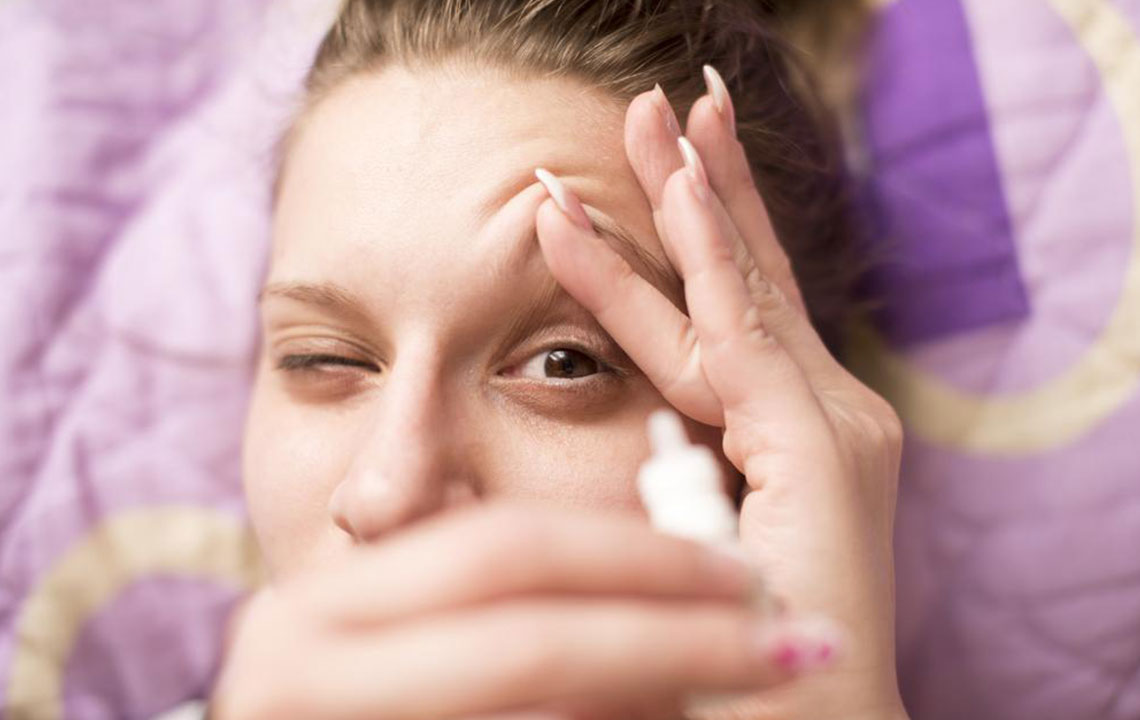Dry Eyes – Causes, Symptoms, and Treatments
Tears provide moistures and keep the eyes lubricated. Generally, tears contain water, oil, mucus and special proteins which protect from eye infections. In contrast dried eyes mean the eyes are deprived of the essential tears. Dry eyes don’t have adequate moisture. Those who suffer from dry eyes experience different symptoms such as itching, redness, and blurred vision.
The eyes of people with dry eye syndrome fail to maintain a normal layer of tears which coat the eyes. It prevents the keeping away of the eye irritants.
In some cases dry eyes also result in excess tears which are known as reflex tearing.

Causes of dry eyes
- There are different causes of dry eyes. Occasionally deviations in the tear-flow system could be the probable causes of dry eyes. Heaters, air conditioners and several other environmental factors around us can also cause the eye to dry out.
- Drugs such as antihistamines, birth control pills, nasal decongestants may even cause side-effects on the eyes contributing to dry eyes.
Symptoms of dry eyes
The above causes of dry eyes cause pain, redness and stinging in the eyes. Stingy mucus may even develop in the eyes. Your eyes quickly get tired after short focusing time durations. All these symptoms cause pain and discomfort in the eyes and hinder the eye’s vision. If you find the above symptoms of dry eyes it is the right hour to visit the doctor.
Diagnosis of the dry eyes
Visit the doctor if you find the symptoms of dry eye syndrome. The ophthalmologist conducts different kinds of tests such as slit lamp and bio-microscope to determine the intensity of the problem. In some cases, the doctor may analyze the tears using a dye such as a fluorescein, which makes the eye tears more visible. The Schirmer’s test is conducted to find out how fast tears are produced by the eyes. A paper wick is placed at the end of the eyelid. Doing so determines the tear production rate of the eye.
Depending on the analysis of the eye test reports the doctors suggest the right treatment.
Treatment for dry eyes
- Eye drops: Eye drops induce the artificial tears. The tears retain adequate moisture levels in the eye.
- Medications: Anti-inflammatory medications such as cyclosporine are used to reduce the tear loss. If the dry eye syndrome problem is severe corticosteroid eye drops prove effective to treat dry eyes. Cholinergic such as pilocarpine is effective to enhance the tear production.
- Lacrimal Plug: Lacrimal plug is a procedure that slows down the tear loss process. Small plugs are used to obstruct the drainage hole in the eyes to prevent the flow of tears.
- Omega-3 fatty acid: You must include food rich in omega-3 fatty acid in your diet. Such foods increase the oil content in the eye and prevent the occurrence of dry eye. Make sure you take the necessary supplements in your diet.
It is essential to know the causes of dry eye and get proper treatment to stimulate the tear production and prevent the worsening of the dry eye syndrome

